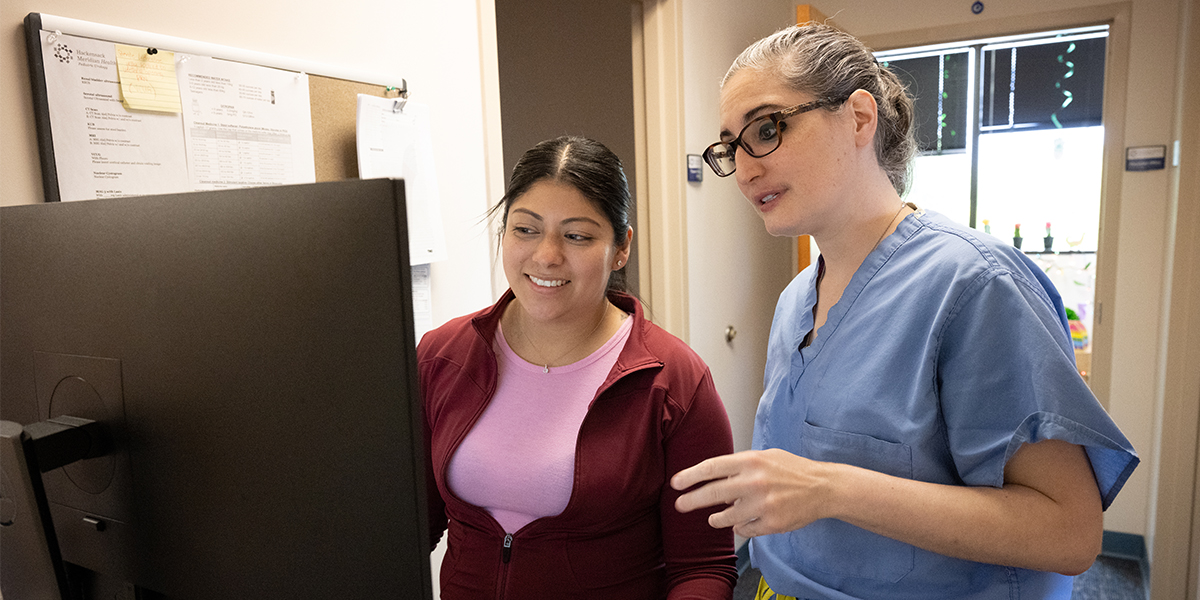Needle Ureteroscope Offers More Efficient, Atraumatic Ureteral Stone Care at Hackensack Meridian Children’s Health
Advanced endoscopic technology, dedicated pediatric stone clinic addresses rising incidence of pediatric urinary stones

Nephrolithiasis and ureterolithiasis are on the rise in young adults and adolescents, especially in females, multiple recent studies show.
“According to some studies, the incidence of stone disease has been rising about 10% each year,” said Aylin Bilgütay, M.D., a pediatric urologist with K. Hovnanian Children’s Hospital of Jersey Shore University Medical Center. While the exact cause isn’t clear, Dr. Bilgütay noted that kidney and ureteral stones develop as a result of combined environmental, lifestyle, dietary, and genetic factors.
Hackensack Meridian Children’s Health takes a continuum of care approach to treating kidney and ureteral stones, with a pediatric urology/nephrology (PUN) stone clinic formed to address prevention and modifiable risk factors. But when ureteral stones do occur, Hackensack Meridian Children’s Health is prepared to offer the most efficient, least traumatic treatment possible.
K. Hovnanian Children’s Hospital recently invested in an advanced pediatric cystoscope and ureteroscope, including an especially small needle ureteroscope. While not all cases require surgical intervention, these tools provide clearer optics to allow more efficient and effective stone management when procedural intervention is needed.
The new smaller scopes make it possible to navigate the delicate ureter structure and smaller anatomy of young patients without damage. Since Hackensack Meridian Children’s Health invested in the smaller scopes, area hospitals and practices have increasingly referred pediatric patients for stone care, Dr. Bilgütay said.
“Having the smallest scope possible makes it easier and more likely that you will be able to reach the stone,” she said.
Case Examples
Sometimes addressing a stone requires a staged, multiple-procedure approach. The smaller scope allows more cases to be achieved in a single procedure without the need for interval stenting in appropriate clinical settings.
While Dr. Bilgütay has treated patients as young as 3 years old for ureteral stones, most patients with urolithiasis are adolescents or teens. At the pediatric stone clinic, pediatric urologists, pediatric nephrologists, and a pediatric nephrology nurse practitioner collaborate to educate families on preventive strategies, such as ensuring proper hydration and reducing salt intake to prevent crystals from forming in the urinary tract.
“An ounce of prevention is worth a pound of cure. It has been shown that if patients hear a consistent message from two different specialists, it can help decrease the stone recurrence rate. This helps kids be kids and not be interrupted by severe pain episodes and landing in the hospital,” Dr. Bilgütay said.
Dr. Bilgütay said a full biochemical and genetic workup on any child with a urinary stone is appropriate, while this may not be recommended for all adults following an initial stone incidence. Biochemical abnormalities are more commonly found as a stone etiology in young patients.
The goal is to identify causes and modifiable risk factors to change the trajectory to help teens and young adults avoid emergency room visits, imaging radiation and the need for medical interventions.
Learn more about our advancements in pediatric urology.
